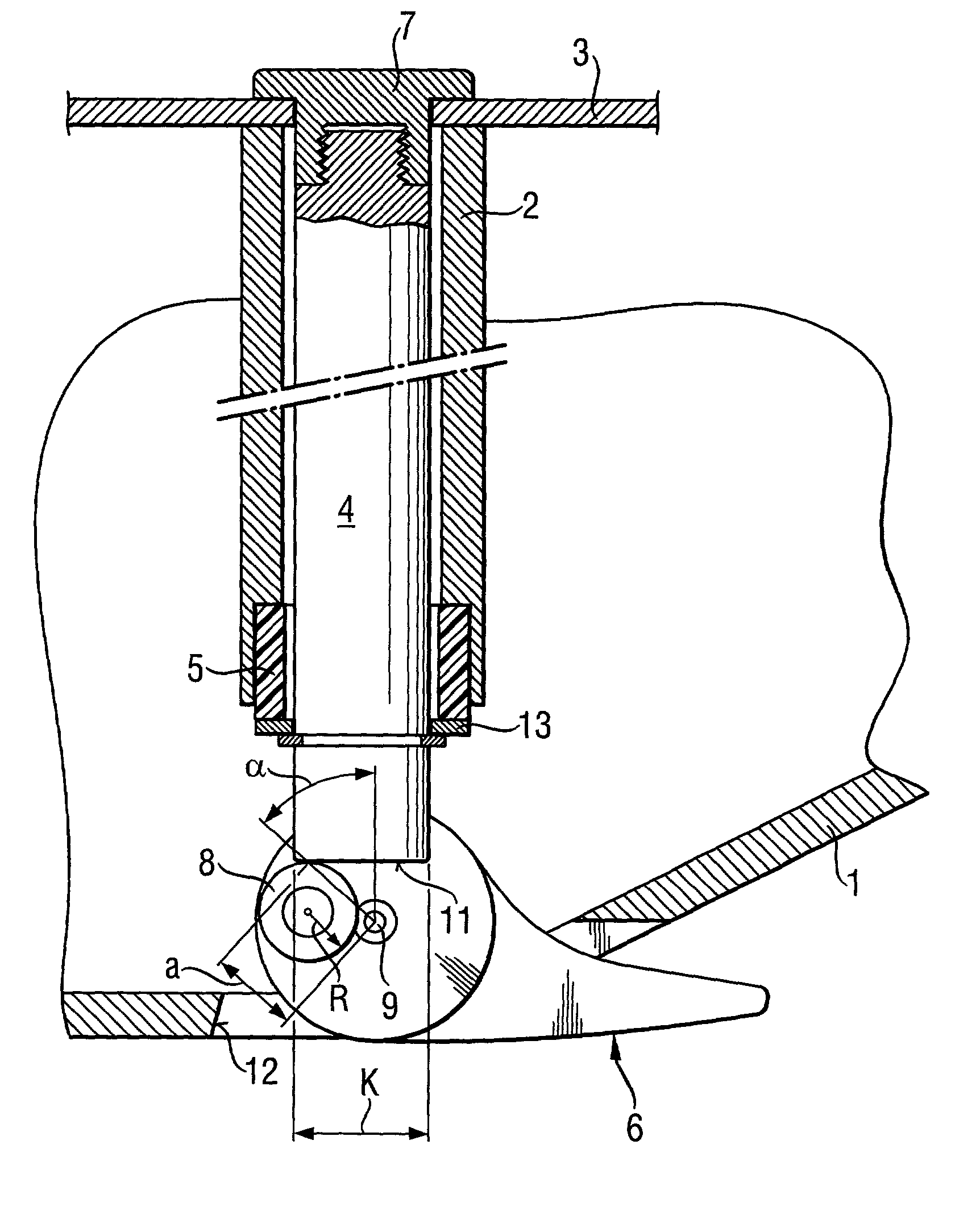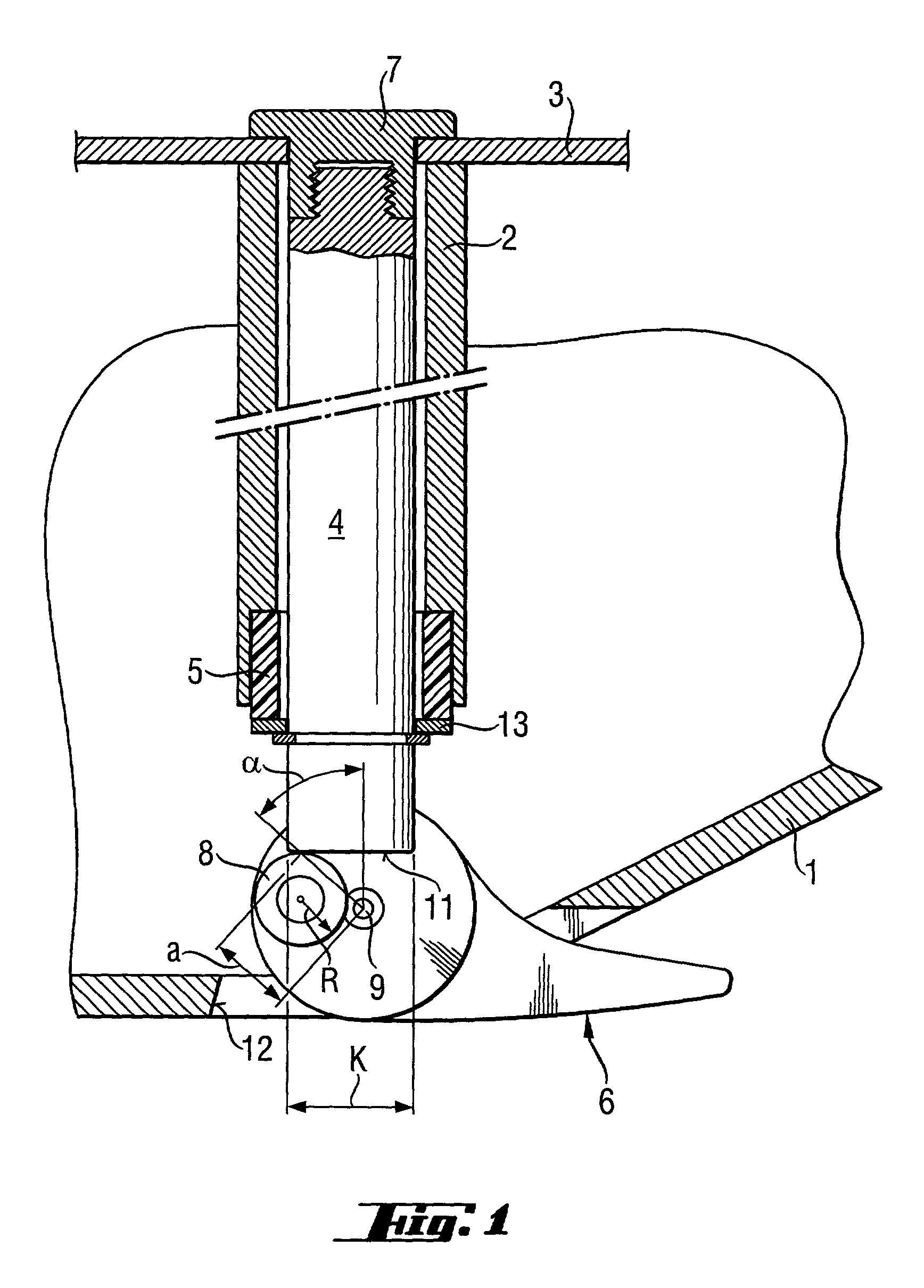Quick-action locking device for an electric power tool
a technology of electric power tools and locking devices, which is applied in the direction of mechanical control devices, instruments, gearing, etc., can solve the problems of increasing the dimensions prolonging the service life of the locking device, etc., and achieves the effects of high clamping force, economic manufacturing, and the ability to withstand large loads
- Summary
- Abstract
- Description
- Claims
- Application Information
AI Technical Summary
Benefits of technology
Problems solved by technology
Method used
Image
Examples
Embodiment Construction
[0022]A quick-action locking device for an electrical power tool according to the present invention, which is shown in FIGS. 1–2, is designed for securing a working tool 3 on a hollow, motor-driven spindle 2 located in a housing 1 of the electrical power tool. The quick-action locking device has a locking spindle 4 axially displaceable in the hollow spindle 2 of the power tool. The locking spindle 4 is axially restrained with a resilient member 5. The resilient member 5 is located in a stepped bore formed in the spindle 2 at its end remote from the working tool 3. The resilient member 5 has one of its end supported against a shoulder formed in the stepped bore, and is supported at its opposite end by a flange 13 secured on the locking spindle 4. A locking lever 6, which is secured to the locking spindle 4 at its end remote from the working tool 3, provides for displacement of the quick-action locking device between its locking position which is shown in FIG. 1, and an exchange posit...
PUM
| Property | Measurement | Unit |
|---|---|---|
| angle | aaaaa | aaaaa |
| angle | aaaaa | aaaaa |
| end angle | aaaaa | aaaaa |
Abstract
Description
Claims
Application Information
 Login to View More
Login to View More - R&D
- Intellectual Property
- Life Sciences
- Materials
- Tech Scout
- Unparalleled Data Quality
- Higher Quality Content
- 60% Fewer Hallucinations
Browse by: Latest US Patents, China's latest patents, Technical Efficacy Thesaurus, Application Domain, Technology Topic, Popular Technical Reports.
© 2025 PatSnap. All rights reserved.Legal|Privacy policy|Modern Slavery Act Transparency Statement|Sitemap|About US| Contact US: help@patsnap.com



